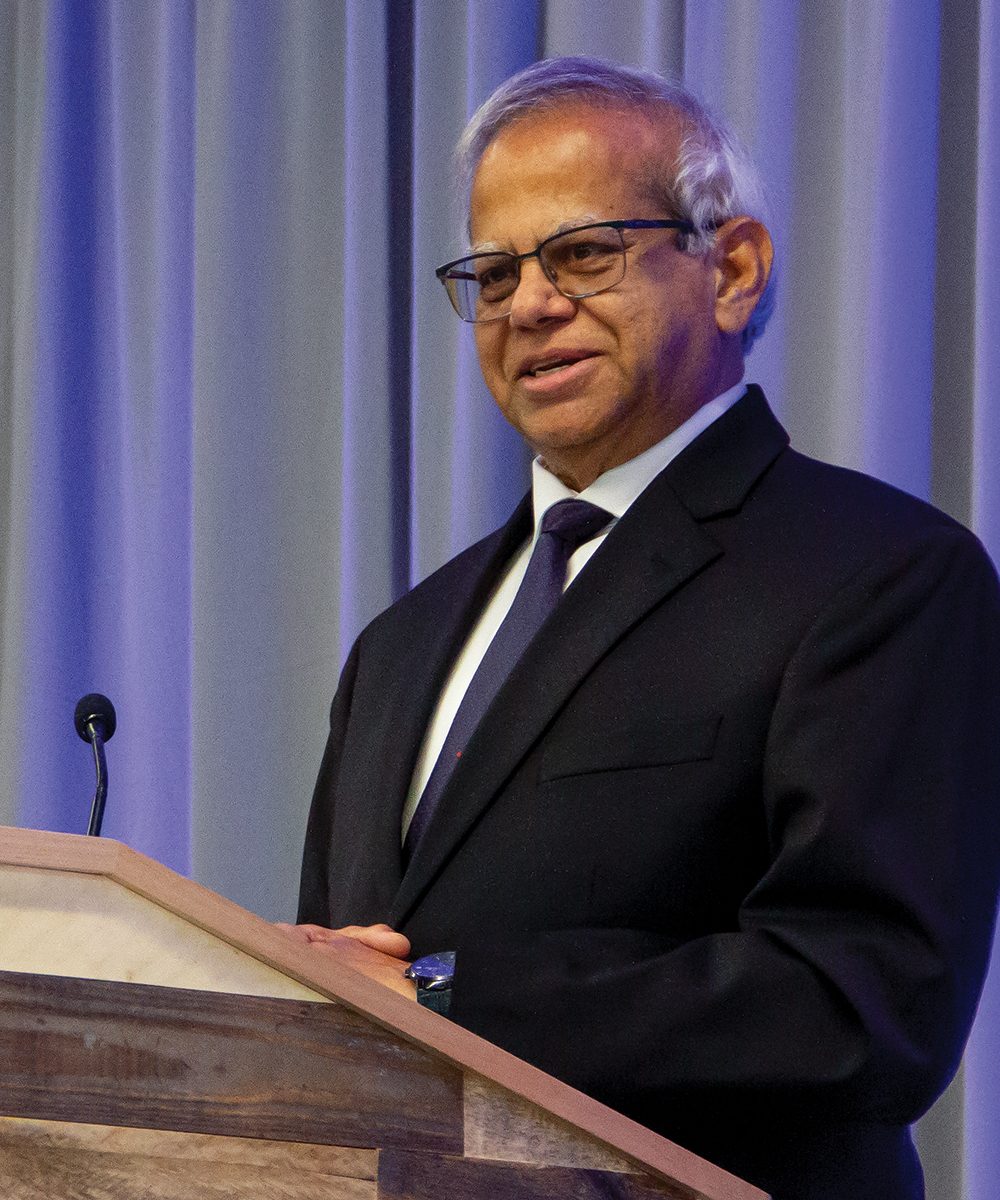bulletin | column
Meet ACerS president Rajendra Bordia
By Eileen De Guire
Life rarely follows the path that a person initially plans on. But for Rajendra K. Bordia, ACerS president for the 2023–2024 term, his somewhat accidental journey to ceramic materials engineering has resulted in a “very happy” and fruitful career.
During his undergraduate years at Indian Institute of Technology in Kanpur, India, Bordia majored in mechanical engineering. The handful of materials courses in the curriculum intrigued him, and with guidance from an influential mentor and an elder brother who was already a professor, Bordia realized that he, too, wanted to pursue an academic career.
Bordia applied to mechanical engineering Ph.D. programs in the United States, including at Cornell University. Because he mentioned an interest in studying mechanical properties of materials, Cornell’s mechanical engineering department transferred his application to the materials science and engineering department. Soon Bordia found himself working in the lab of ACerS Distinguished Life Member Rishi Raj.
Bordia worked with Raj on fundamental problems in ceramics processing. Learning about the wide spectrum of applications in which ceramics are used grew his interest in materials science and, specifically, ceramics.
Bordia’s first position after earning his Ph.D. was as a researcher at DuPont Corporation (Wilmington, Del.). During his six years at DuPont, Bordia enjoyed working with George Scherer, a luminary scientist whom he greatly admired. He credits his time at DuPont as being critical to honing his ability to identify significant problems and formulate relevant fundamental questions.
While Bordia’s years at DuPont were highly productive from a research perspective, he still aspired to an academic appointment. He began his academic career as associate professor at the University of Washington. He is now at Clemson University in South Carolina, where he serves as the George J. Bishop, III Endowed Chair Professor of Ceramics and Materials Engineering.


“The Society has provided me quite a few wonderful professional growth opportunities.”
Bordia’s current research group at Clemson aims to understand fundamental ceramic processing problems for the purpose of controlling microstructure and, ultimately, properties. Additionally, he and his team work to formulate the fundamental questions that relate to specific application areas, such as aerospace, energy conversion and storage, and biomedicine.
Bordia sees his role as a professor as much more than just teaching students. He enjoys mentoring students, and regarding Ph.D. students in particular, his goal is to help them transition from a student to a colleague through what he describes as a two-step process.
The first step, “taking ownership,” comes when students make a research problem their own by developing experiments and contributing ideas beyond the initial guidance. The second step comes when a student teaches him something important about the problem that he does not already know.
“At that point,” Bordia says, “you have become my colleague.”
Bordia credits the Society with helping him build a broad professional network, starting with his first conference in the early 1980s. He vividly recalls the experience of not knowing anybody but then being approached after his talk by the late, renowned Roland Cannon.
Since that modest start, Bordia has gone on to serve the Basic Science Division as a meeting organizer and through the Division’s leadership ranks. Additionally, he has served on the Society’s Panel of Fellows, Publications Committee, and Board of Directors.
Bordia’s term as president will be guided by the knowledge that the Society’s primary purpose is to serve the needs of all its members, with particular attention to the professional needs of the Society’s underrepresented groups. His approach is to listen to a broad spectrum of members and staff, which will serve him well as he leads the Society through its next strategic planning exercise.
Other priorities include taking the next steps with the Society’s journal publishing partnership, broadening the technical scope of publications and meetings, and developing mutually beneficial partnerships with other national ceramic societies and other professional organizations.
Bordia is also excited to partake in the travel that the president position entails.
“Traveling makes me feel like a child again. It brings out the curiosity and allows me to ask questions,” he says.
Bordia acknowledges that he has enjoyed enormous support from his family, which includes his wife, Nomita Kayastha, two sons, daughter-in-law, two grandchildren, and a very large extended family.
“I have been very happy with that somewhat accidental choice I made for ceramics,” he says.